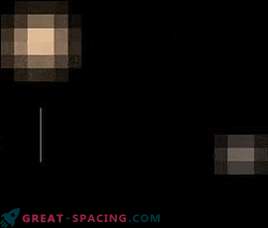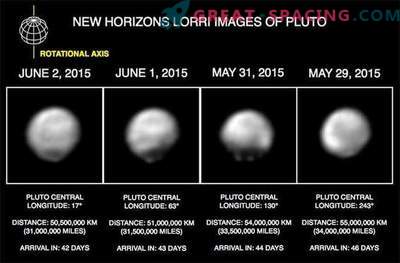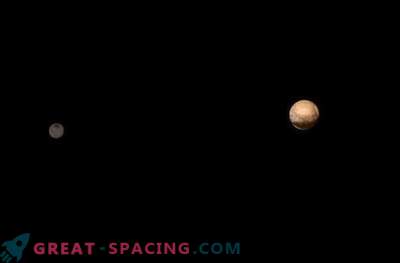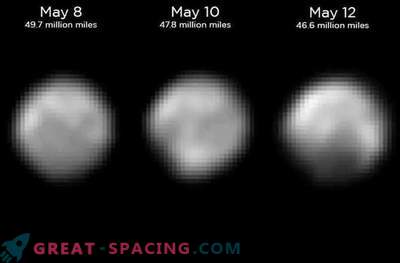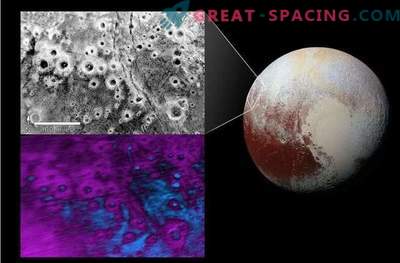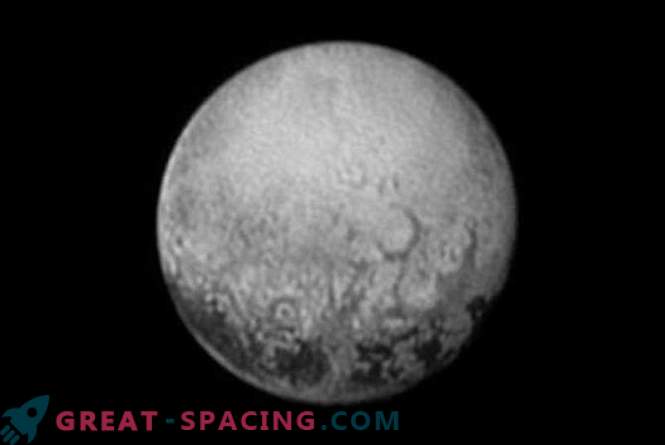
At a distance of three billion miles from our Earth, as well as two and a half million miles from the planet Pluto, a NASA spacecraft called the New Horizons made almost its best shot of four unique dark spots that fascinate scientists. Spots appear on the other side of the planet Pluto, which faces its largest satellite, called Charon, always.
This side will be invisible to the New Horizons apparatus when the ship makes a close flight in the morning of July 14th. Alan Stern, principal investigator at the Southwestern Research Institute Boulder, Colorado, describes this image as "the last and best view of the far side of the planet Pluto, which was done, and perhaps it will be the most ideal for decades to come."
The appearance of these spots is associated with dark belts on the equatorial region of Pluto. And scientists have noticed that the spots have the same size and the same distance between them. "It is strange, but they are so symmetrical," said Kurt Niebuhr, a scientist at the New Horizons program in Washington, at NASA headquarters. And Jeff Moore, a researcher at NASA California, is also very intrigued. "We can not yet say for sure whether they are flat or plateau, or whether it is a play of light on a completely smooth relief of the planet." Large dark areas are assumed to be 480 km across, which is about the size of Missouri. However, compared to earlier images, here we see that these mysterious areas are much more complex than they seemed at the beginning, while the boundaries between the light and dark areas are irregular and rather sharply defined.
In addition to solving the mystery of the spots, the New Horizons team of scientists is interested in identifying other surface variations, such as impact craters, which were formed when they collided with dwarf planets. Moore notes: “Later, we will combine the images, starting with the existing ones and those that were made, but have not yet been sent to Earth. And maybe we will be able to read the story of Pluto. "
And in three days, New Horizons will make the closest approach to Pluto. On the morning of July 14, the ship will cover about 12,500 kilometers (7,800 miles) of a large heart-shaped spot that captures the minds of people all over the planet.
July 14 at 7:49 am Eastern Standard Time, New Horizons, with a set of seven of their scientific instruments for data collection, will sweep past Pluto at an incredible speed of 30,800 miles per hour (or 49,600 kilometers per hour). The mission completes the initial exploration of our solar system, taking a first look at the icy little planet.



